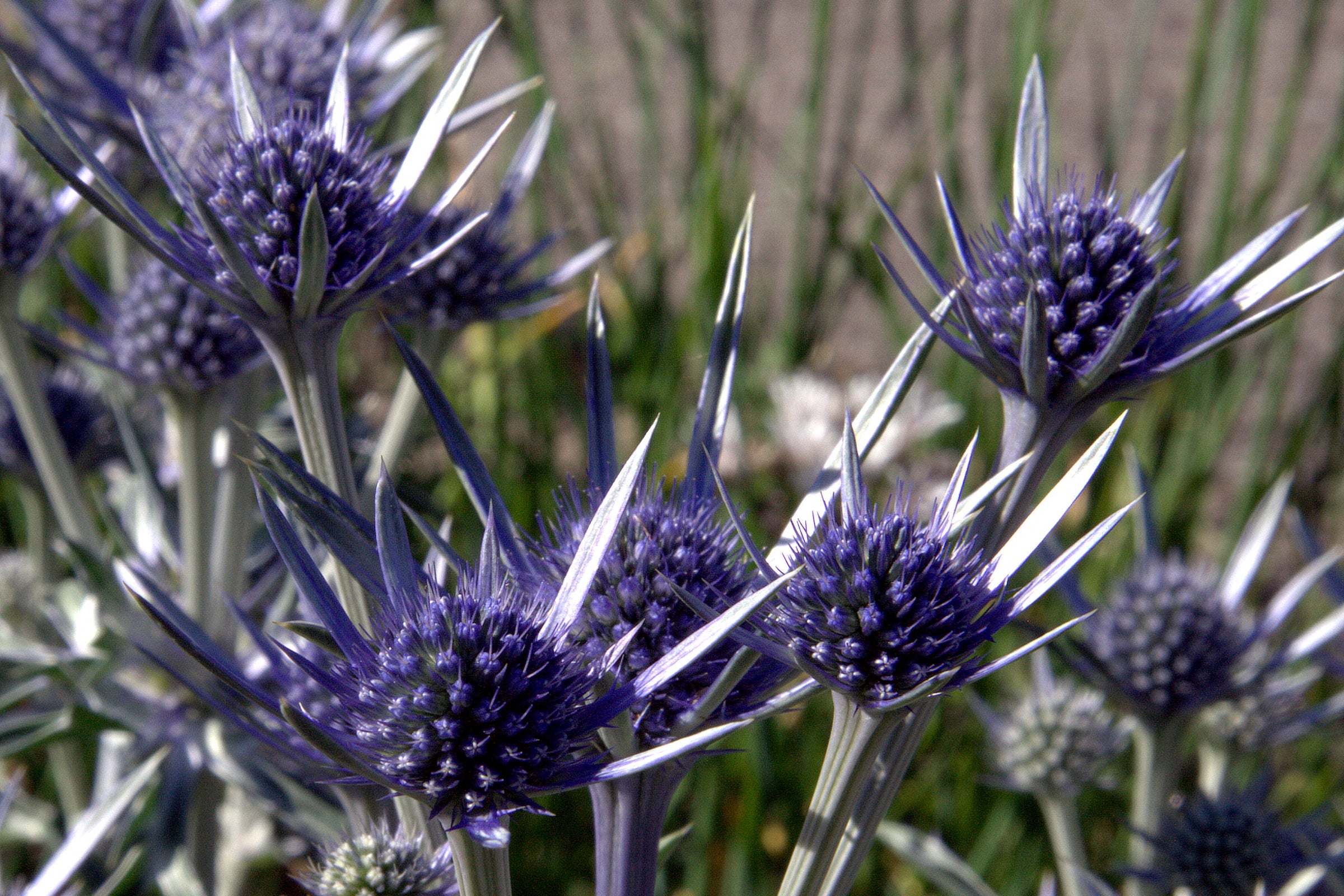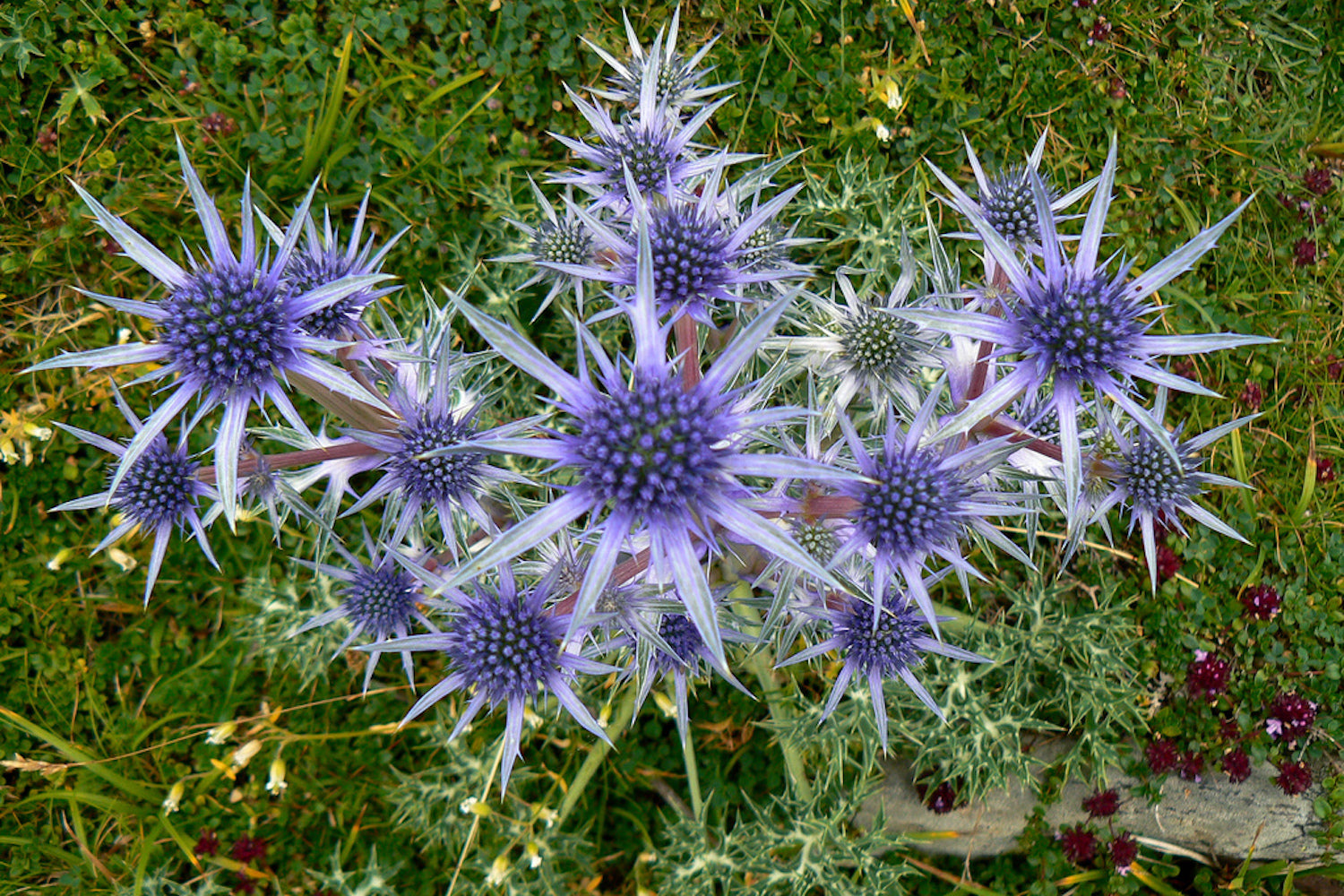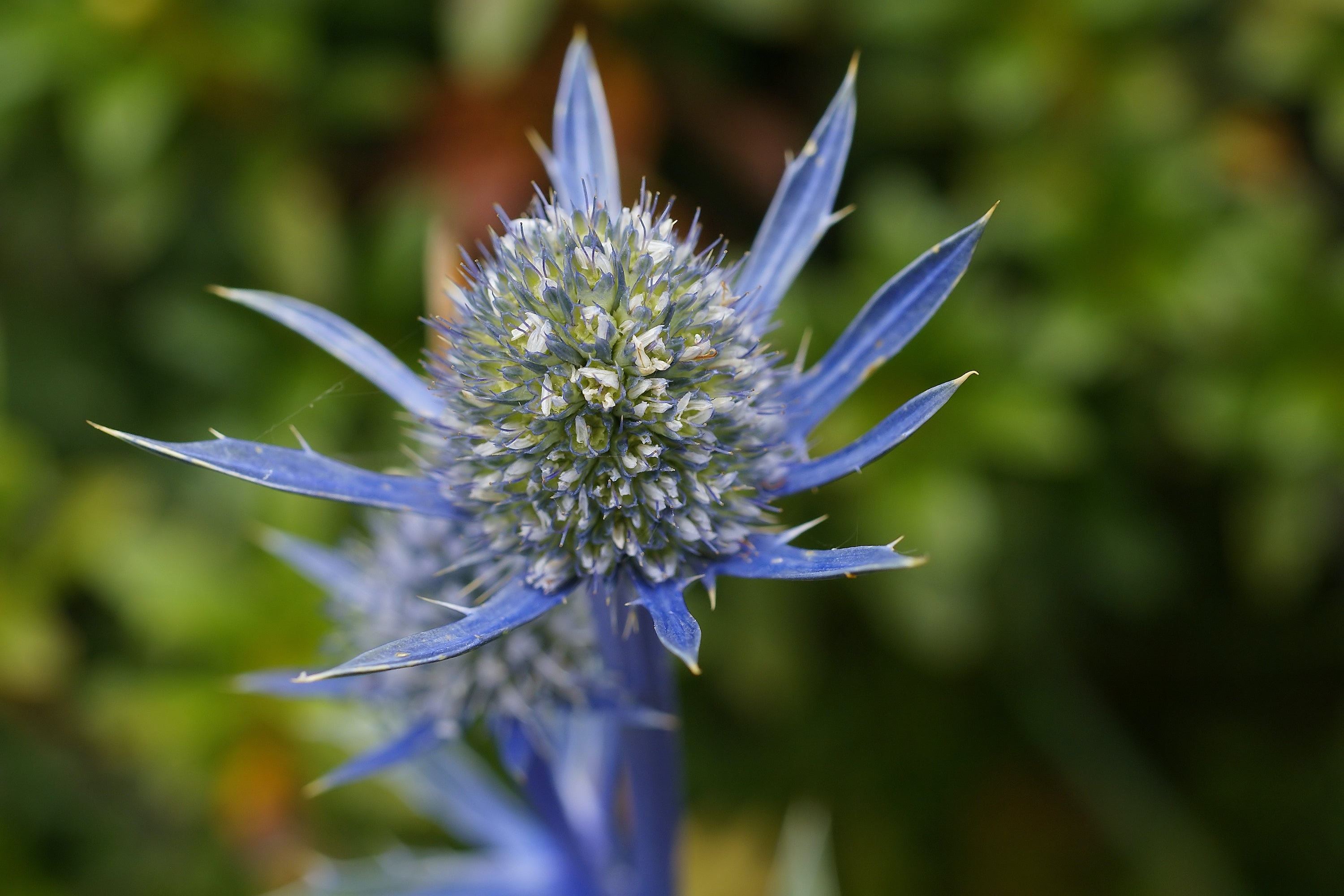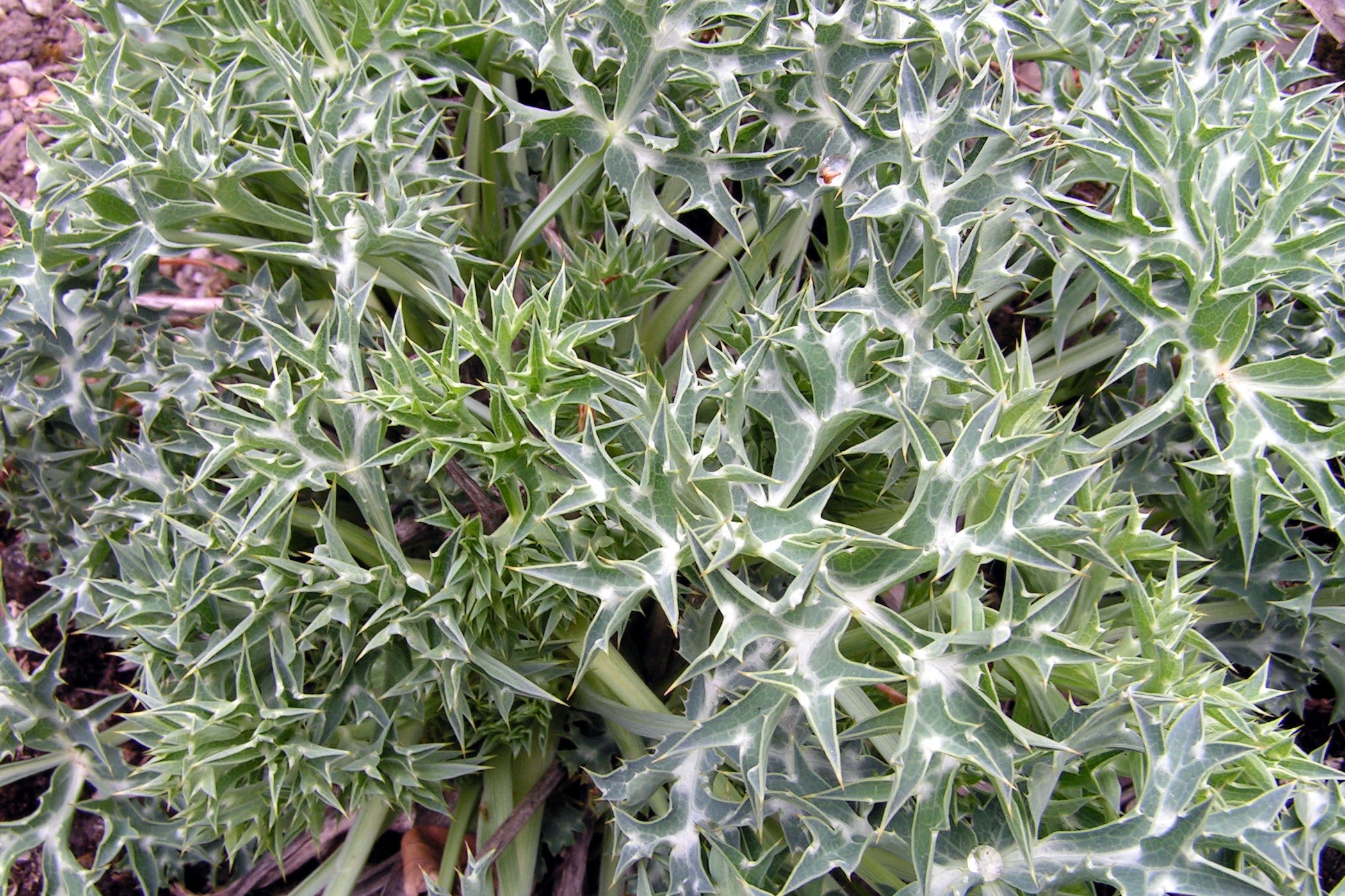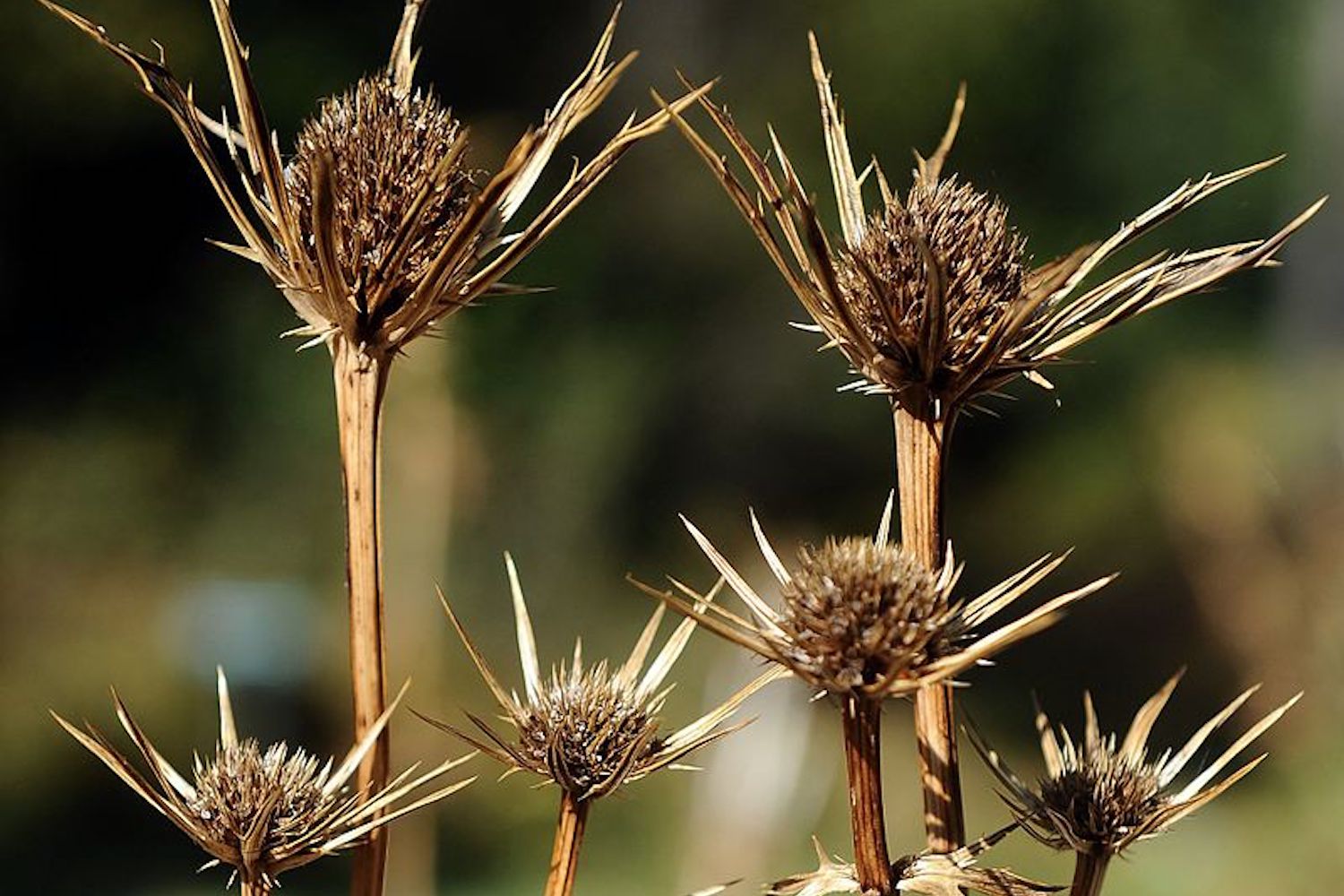Eryngium bourgatii 'Picos Blue'
Approx. 0.5 litre pot
About this cultivar:
Eryngium bourgatii 'Picos Blue' is a larger and more intensely blue cultivar than is typical of the bourgatii species. Leaves are grey-green with white veining and flowers an intense blue with a starry, thistle-like form.
The species, Eryngium bourgatii, sometimes commonly called Mediterranean sea holly, is a herbaceous perennial native to the Pyrenees. It is noted for its dense, cylindrical, cone-shaped, thistle-like, rounded, terminal flower heads composed of tiny, sessile (no neck), densely-packed blue flowers which bloom from mid-summer into Autumn. They also look great when dried out. Gray-green to dark green leaves are attractively marbled with silver-white veins. Basically a smaller, more compact species of Eryngium.
The species was named for a French medical doctor named Bourgat who collected plants in the Pyrenees in the company of Antoine Gouan, who first described the species, in 1766–67.
- Position: Full sun, partial shade
- Soil: Almost any soilt
- Flowers: July, August, September, October
- Other features: Royal Horticultural Society Award of Garden Merit (RHS AGM), Grows well in Ballyrobert, Bees and Butterflies, Interesting Foliage or Fruit, Cut Flowers or Dried Flowers
- Hardiness: H5 - Hardy in most places throughout the UK even in severe winters (-15 to -10°C)
- Habit: Clump forming, bushy
- Foliage: Deciduous
- Height: 45 - 60 cm (1.5 - 2 ft)
- Spread: 30 - 60 cm (1 - 2 ft)
- Time to full growth: 2 to 5 years
- Plant type: Herbaceous Perennial
- Colour: Green, blue
- Goes well with: Verbena bonariensis, Verbascum, Perovskia, Aconitum, Artemisia, Achillea, Iris, Deschampsia or even Rudbeckia.
About this genus:
Eryngium (e-ring-e-um or er-in-je-um) is a genus of flowering plants with over 250 species that, believe it or not, are in the carrot family (Apiaceae). Common names include eryngo, spiny coriander, culantro and the more popular sea holly (though the genus is not related to the true hollies, Ilex). People also often think it is a thistle (Cirsium)! Apparently you can eat the roots or use them as flavouring, although I've never tried (I guess it is in the carrot family after all.....)
Often annual and perennials with hairless and usually spiny leaves; we only grow and sell the perennial cultivars. As the common name would imply some species are native to rocky and coastal areas, but the majority are grassland plants. Despite the reputation of dry-soil-only plants we are proud of the fact we have found many cultivars that tolerate a bit of wet in our clay soil in our garden at Ballyrobert; much to the consternation of the book-believing gardeners! We sell them here. We grow them anywhere that isn't completely soaked or completely shaded although we will concede that most prefer a dry and sunny spot.
Often Eryngium are almost architectural plants and look great by themselves - when they die back for the season they keep their attractive structure. However do try them with Verbena bonariensis, Verbascum, Perovskia, Aconitum, Artemisia, Achillea, Iris, Deschampsia or even Rudbeckia. Red and blue make a good combination in my opinion. A bit like grasses; think about the light you have before planting out in order to make the most of these wonderful plants!

